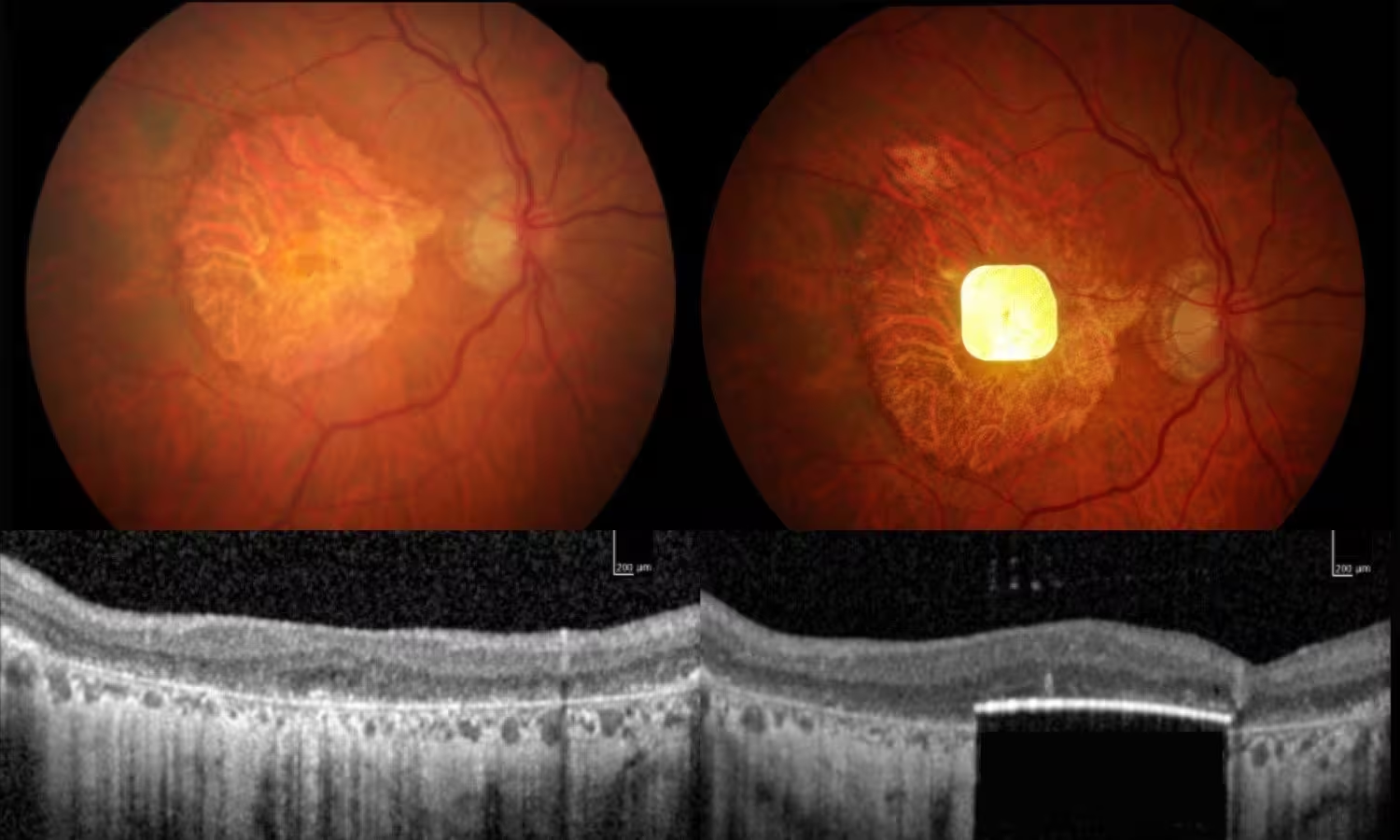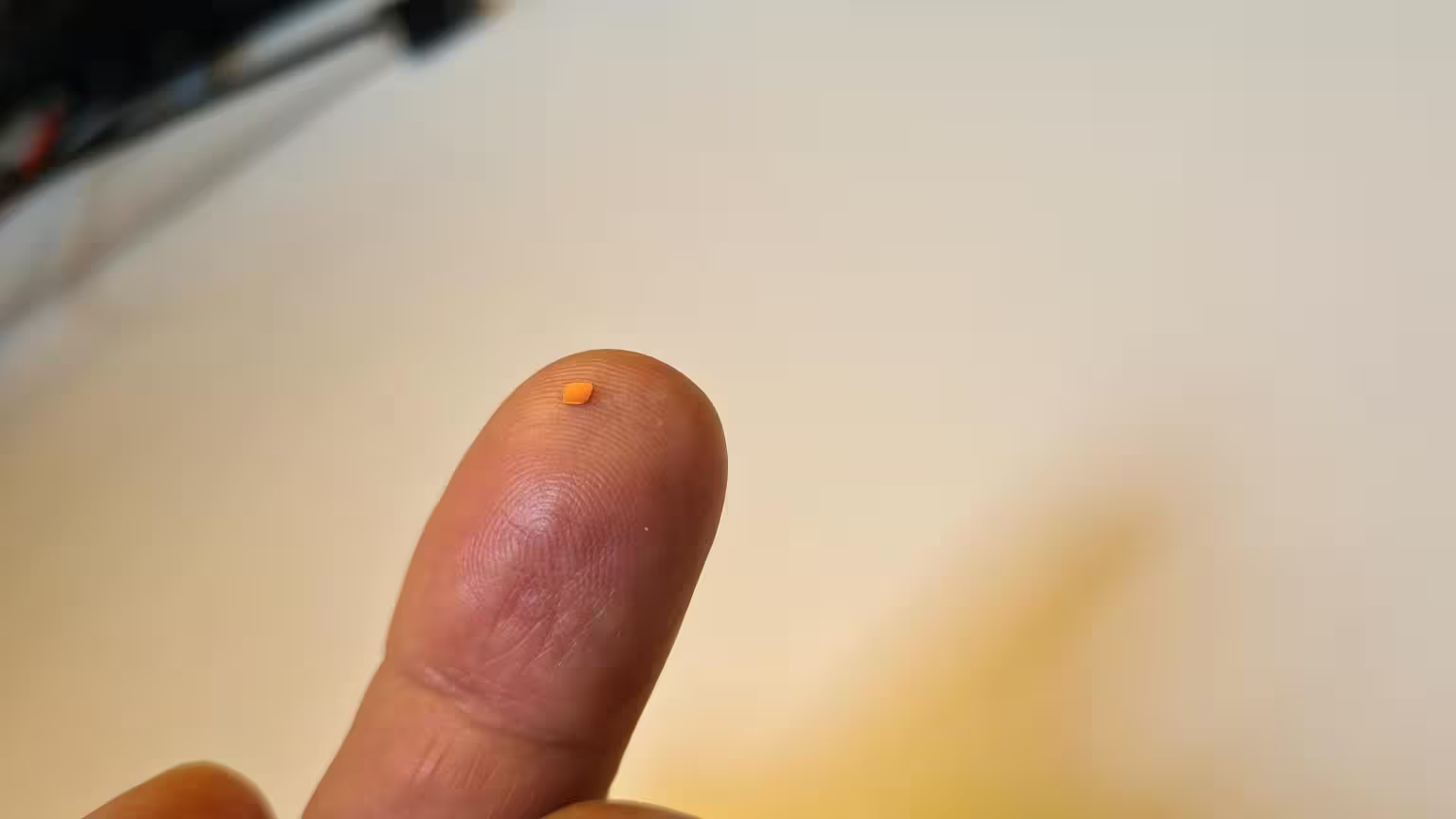4 Minutes
Imagine reading a book again after years of blurred letters and blank spots. For several patients with age-related macular degeneration (AMD), that is no longer just a hope but an emerging reality. A multinational clinical trial of a photovoltaic retinal implant called the PRIMA System has given people back parts of their central vision, allowing activities such as reading, puzzle solving and even navigating public transport.

Image of the chip in a patient’s eye.
A patient story: small letters, big rewards
Sheila Irvine, who took part in the Moorfields trial, describes the change in simple, human terms. Before the implant she says it felt like having 'two black discs' blocking the central field and warping the edges. An avid reader, she signed up for the study hoping to help future patients and to reclaim a beloved habit. 'There was no pain during the operation,' she recalls, 'but you are still aware of what is happening. It was dead exciting when I began seeing a letter.'
Sheila emphasizes the work behind the win: training, practice and gradual improvement. Trial staff set reading challenges, from tiny prescription labels to crosswords and tin labels. For Sheila, the result is more than letters; it is renewed optimism and access to another world through reading.
How the PRIMA System works: a solar chip under the retina
The PRIMA System is a wireless, subretinal photovoltaic implant paired with custom glasses and a waistband computer. The glasses project near-infrared light that the tiny chip converts into electrical signals — in effect the implant acts like a microscopic solar panel for light information. At just 30 micrometers thick (around half the thickness of a human hair), the device sits beneath the layer of retinal cells that have degenerated in dry AMD and stimulates the remaining neural circuitry.

Key technical notes
- The implant remains passive until activated by the glasses and processing unit.
- Near-infrared projection enables wireless energy transfer and avoids visible-light interference.
- A digital zoom function helps magnify letters and improve practical reading performance.
The trial, collaborators and clinical implications
The global trial was led by Dr Frank Holz at the University of Bonn, with participants enrolled across the UK, France, Italy and the Netherlands. The device is being developed by Science Corporation (science.xyz), a company focused on brain-computer interfaces and neural engineering.
Mr Muqit, one of the clinicians involved, highlights the wider clinical potential: 'My feeling is that the door is open for medical devices in this area, because there is no treatment currently licensed for dry AMD - it doesn’t exist. I think it is something that, in the future, could be used to treat multiple eye conditions.'
Beyond reading, trial participants found creative, real-world uses. One French participant used the system to help navigate the Paris Metro, while others trained on puzzles and everyday tasks. These examples underline the difference between laboratory measures and meaningful improvements in daily life.
What this means for vision science and patients
The PRIMA implant is not a cure but a prosthetic approach that restores limited central vision by bypassing damaged photoreceptors. Its photovoltaic, wireless design addresses several technical hurdles faced by older retinal prostheses, including wiring complexity and bulky power systems. If further trials confirm and expand these findings, photovoltaic retinal chips could become an important option for people with dry AMD and related retinal degenerations.
For patients like Sheila, the change is deeply personal: 'Reading takes you into another world. I’m definitely more optimistic now.'
Source: scitechdaily


Leave a Comment